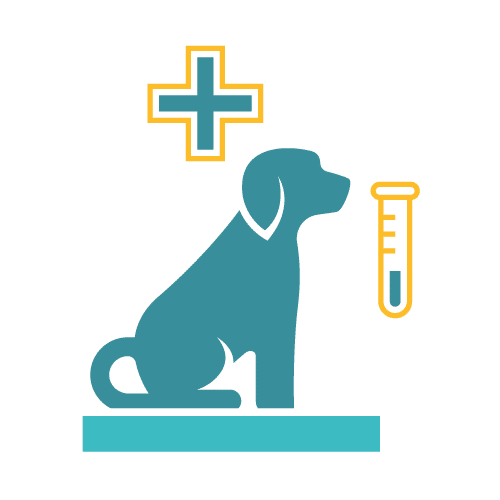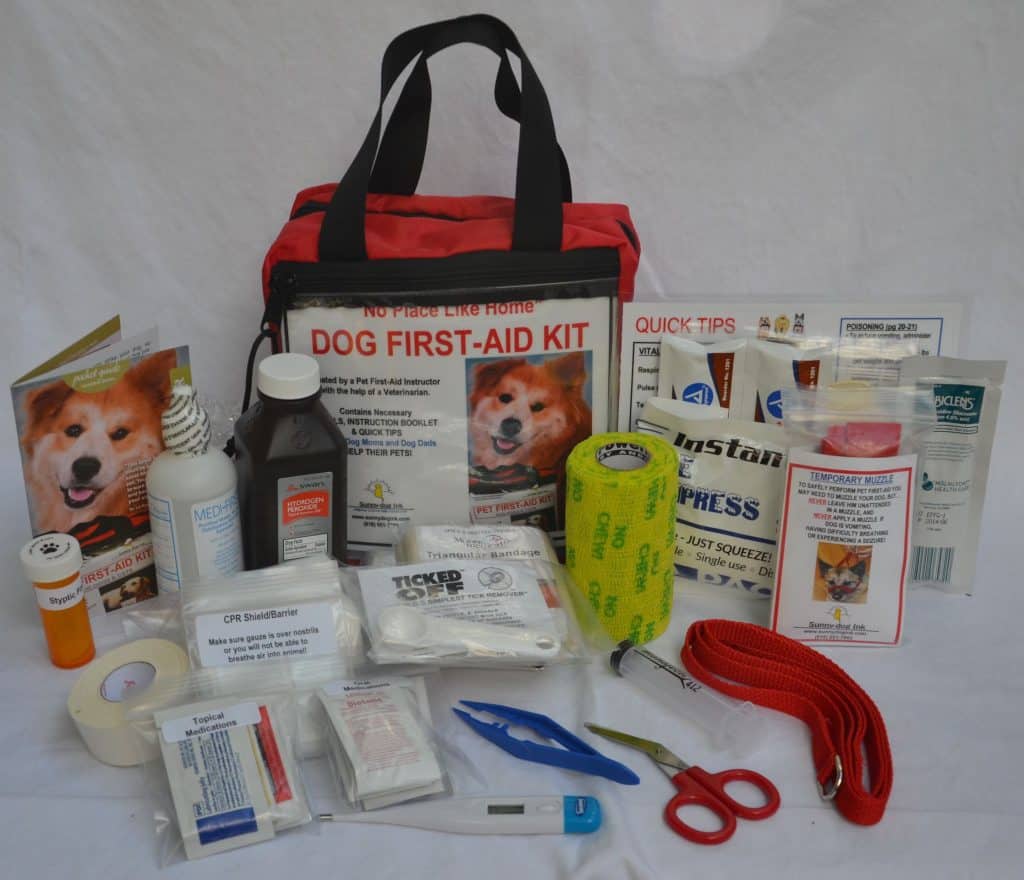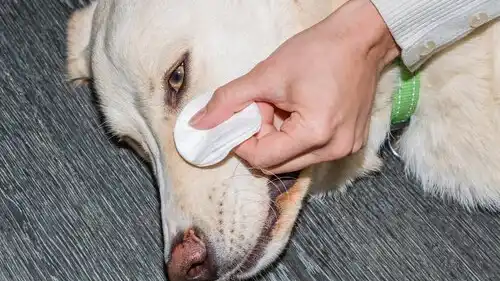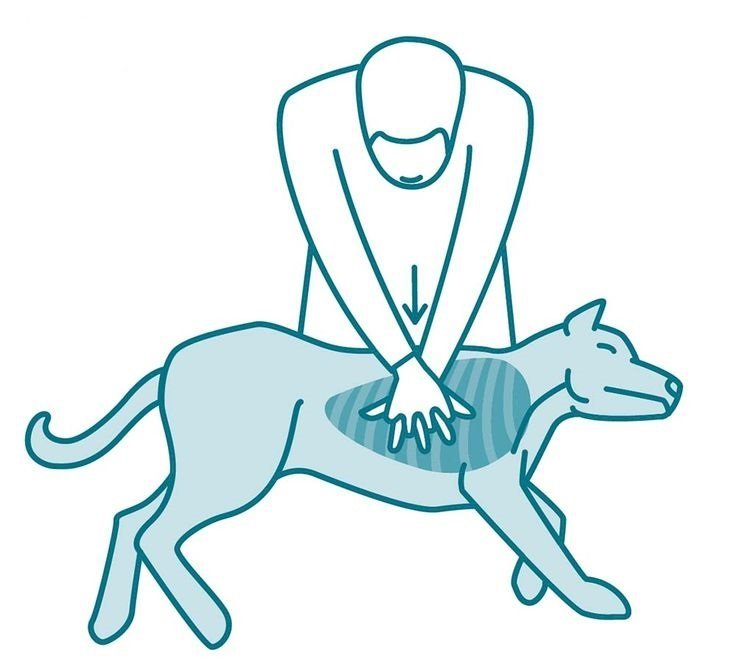In the life of every dog owner, there comes a time when facing a health emergency is inevitable. Being prepared can make all the difference, whether it’s a minor injury during a walk or a more serious situation like choking. This comprehensive guide aims to equip dog owners with crucial first aid skills and knowledge, helping them confidently and effectively respond to various common canine health emergencies. From preparing a first aid kit to managing serious conditions like poisoning or heatstroke, this article covers essential tips to ensure the safety and well-being of your beloved pet.
Understanding Your Dog’s Basic Health

Every dog owner should be familiar with their pet’s normal health indicators. These include a regular breathing rate, a steady heart rate, and a normal body temperature, typically around 101 to 102.5 degrees Fahrenheit. It’s crucial to regularly monitor these signs as they can provide early warnings of health issues. Knowing how to conduct a basic health check at home, such as examining for any unusual lumps or changes in behavior, can be instrumental in the early detection of potential problems.
Equally important is maintaining regular veterinary check-ups. These visits not only help in the early detection of diseases but also allow owners to discuss any concerns about their dog’s health. A veterinarian can offer personalized advice based on the dog’s breed, age, and overall health condition, ensuring the pet receives the best care.
Preparing a Dog First Aid Kit

A well-prepared first aid kit is a must-have for any dog owner. Essential items include bandages, antiseptic wipes, tweezers, a thermometer, emergency contact numbers, and the nearest veterinary clinic. It’s important to regularly check and replenish the kit, ensuring that all items are in good condition and within their expiry dates.
Storing the kit in an easily accessible location is key, as emergencies can occur without warning. A compact and portable kit is also advisable for those who often take their dogs on outings or travels. Being prepared with a first aid kit can significantly improve the outcome in emergencies, allowing immediate response to injuries or health concerns.
Responding to Common Injuries

When it comes to common injuries such as cuts, scrapes, or minor wounds, the first step is to clean the affected area with a mild antiseptic. This helps prevent infection. If bleeding is involved, applying gentle pressure with a clean bandage or cloth can help control it. It’s important to monitor the wound for signs of infection, such as increased redness, swelling, or discharge.
In the case of sprains or fractures, it’s crucial to keep the dog as immobile as possible and avoid manipulating the injured area. Immediate veterinary attention is recommended, as improper handling can worsen the injury. Pain management should only be done under a veterinarian’s guidance, as certain human painkillers can be toxic to dogs.
Managing Dog Bites and Stings

Dogs are naturally curious and may occasionally suffer from insect bites or stings. If this occurs, gently removing any visible stingers with tweezers and applying a cold compress to reduce swelling is important. Monitoring for allergic reactions, such as excessive swelling or difficulty breathing, is essential, as these require immediate veterinary attention.
Animal bites, especially from other dogs, can be more serious due to the risk of infection and deeper tissue damage. After safely separating the dogs, cleaning the wound and seeking professional veterinary care is crucial. In cases of severe bites, controlling bleeding and preventing shock are priorities until professional help is available.
Dealing with Poisoning and Toxic Substances

Poisoning is a common emergency in dogs, often resulting from ingestion of toxic substances. Recognizing the signs of poisoning, including vomiting, diarrhea, lethargy, or seizures, is crucial for a timely response. Immediate isolation of the dog from the toxic substance and identification of what was ingested can greatly assist the veterinarian in treatment.
Many everyday items, such as certain plants, human medications, and foods like chocolate and grapes, are toxic to dogs. Keeping these items out of reach and educating family members about these dangers is key to prevention. In cases of suspected poisoning, contacting a veterinarian or a poison control center immediately is essential.
Overcoming Heatstroke and Hypothermia

Dogs can suffer heatstroke if exposed to high temperatures for extended periods, especially without adequate shade or water. Signs of heatstroke include excessive panting, drooling, and lethargy. If these symptoms are observed, it’s important to move the dog to a cooler area, provide fresh water, and apply cool (not cold) water to their body, particularly around the neck and under the armpits.
Conversely, hypothermia occurs in cold conditions and can be recognized by symptoms such as shivering lethargy, and weak pulse. Warming the dog gradually with blankets and seeking veterinary assistance is vital. Avoiding extreme temperature changes and monitoring the dog’s response is crucial in both cases. Once stable, a visit to the vet is recommended to assess for any underlying issues or complications.
Choking and Breathing Emergencies

Choking is a serious dog emergency, often caused by swallowing small objects. Signs include difficulty breathing, excessive pawing at the mouth, and a distressed appearance. If safe to do so, opening the dog’s mouth to check for and remove any visible obstructions can be attempted. However, caution is advised to avoid being bitten.
Knowing how to perform canine CPR can be life-saving when the dog cannot breathe. This involves chest compressions and rescue breaths, ideally performed after proper training. During any breathing emergency, remaining calm and seeking immediate veterinary assistance is crucial.
Caring for an Unconscious Dog

An unconscious dog still breathing should be placed in the recovery position, with the head extended and the body rolled onto the side to maintain an open airway. Monitoring the dog’s breathing and pulse is important; the veterinarian should note any changes.
If the dog is unconscious and not breathing, emergency CPR should be initiated immediately. However, care should be taken not to move the dog unnecessarily, especially if a spinal injury is suspected. In such cases, keeping the dog warm and still while seeking immediate veterinary care is the best course of action.
The Bottom Line
This guide provides dog owners with essential knowledge and skills to effectively respond to various health emergencies their pets may encounter. While the first-aid tips discussed are invaluable, they do not replace professional veterinary care. Dog owners must practice these skills, stay prepared with a well-stocked first aid kit, and maintain regular pet health checks. Prompt and calm action can make a significant difference in emergencies, offering the best chance for a positive outcome. Remember, being well-informed and prepared is the key to ensuring the health and safety of your beloved canine companion.